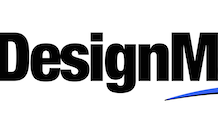According to Régis Thienard, an inkjet specialist owning various inkjet patents and one of the JETVarnish inventors, 2020 will be another inkjet drupa. The success of inkjet derives from, and is embedded in, the very nature of the technology, which can be looked at across its key elements.
Contactless printing
Today, digital printing eliminates most of the inefficient downtime of a printing press – there are almost no more intermediate steps. As print service providers become more productive, they increase their responsiveness and they contribute to inventory reduction for their customers. The future of printing is set for digital and for inkjet. Xerography and offset can’t go where inkjet can go with very large widths, printing on objects and fabrics. Inkjet technology allows printing without contact, eliminating the risk of distortion of the image or deterioration of the substrate.
No market is standing still for manufacturers and they are all redoubling their ingenuity to manage those tiny drops of ink. Whether it means the ejection-height compared to paper, the fragility of the heads in terms of friction, their interchangeability, the speed of ink-ejection coupled with the preciseness of each drop’s shape, the size and quality of the pigments, limitation of ink penetration into the substrate, or the improved drying of uncoated paper, etc., we see many printhead suppliers (Memjet, Kyocera, Fuji, Xaar and Konica Minolta, to name but a few) delivering higher resolution, higher speeds and lower costs. This all opens up new horizons.
While heads previously only had moderate resolution and speed with limited application usage, we are witnessing an incredible development of new heads across many suppliers delivering high throughput and print resolution. Therefore, there are a lot of inkjet machine suppliers serving numerous markets from labels to large format, textiles, packaging and industrial printing.
Software, Artificial Intelligence and 3D printing
While the printhead itself requires advanced technologies, the inkjet magic taking place is also thanks to other key ingredients recently available such as 3D printing, advanced software and Artificial Intelligence. These components are the ultimate tools to help in perfecting the inkjet machines, thus advancing their flexibility and accuracy beyond expectation. Some printhead manufacturers like Bobst Group Mouvent are using 3D printing technologies to integrate all the components into a small space, with the highest level of precision, delivering compact head-clusters for use across numerous technologies. It’s almost as simple as Lego bricks.
Adjacent technologies are truly accelerating the ongoing development of inkjet, itself invented many years ago. New algorithms help digital press builders in the search for nozzle failure, in the detection of air bubbles inside the head’s ink tank, in achieving a constant ink-ejection rate coupled with the fineness of each drop, or with fly ink shot-correction by diverting to the jet adjacent to the missing jet, etc.
In short, you can say that Artificial Intelligence in advanced software is helping to remove imperfections in printhead engineering. The recently invented Industry 4.0 – which refers to machines that are augmented with wireless connectivity and sensors, connected to a system that can visualise the entire production line and make decisions of its own – is very much aligned to the principles of inkjet.
Colour in abundance
With presses having up to 12 colours and drop-size varying by a factor 10, all colours are printable as the gamut is at the top of any printing system. It is no longer the human eye that judges and compares between the original and the output, it is the system which applies its own patterns. The recent announcements of Landa, in achieving close to 97% of Pantone and claiming that spot colours may eventually become something of the past, are setting the scene for drupa 2020, where we all expect inkjet to be the star of the show. The recently announced BOBST DigiColor technology also heralds the twilight of spot colours. All such announcements will please brand owners, who will no longer have to rely on the mood and subjectivity of a press operator.
Application versatility
Inkjet technology has the potential to print on almost any substrate, from textile to packaging, including direct-to-shape on many substrates. Current inkjet technology has not established a landmark across literally all that is printed, but there is no doubt that it will evolve further. In some areas, inkjet is still in its infancy, for example in embellishing. Companies like MGI, KURZ and Scodix are opening up new areas and this is just the beginning.
Inkjet is increasingly seen as an evolutionary driver of printing techniques and such evolution enables the printing of increasingly complex materials. The contactless nature of inkjet opens up myriad new markets such as glass, ceramics, tiles and even printed circuit-boards.
I expect drupa to showcase digitally printed books with integrated Augmented Reality and printed electronics, connected packaging delivery advanced safety features across the entire supply chain and fabrics with health sensors (tension, dehydration, etc.)
Variable data, agility and flexibility
Brand owners and their agencies are expecting, even demanding, more personalisation and late stage customisation. They all wish the package to be the product. Some major players like Philip Morris International (PMI) expect digital printing to be at the core of their packaging production. Digital enables any packaging item to be unique and done in 7 days rather than 18 months, as they recently claimed. Moreover, as ‘data’ becomes the backbone of Industry 4.0, digital printing and inkjet will by its nature cope with this new reality so whatever is printed can be all the same but also can be all different.
Costs
Many claim that a limiting factor of inkjet is linked to the cost of ink. Today, the manufacturer-research required to produce inks involves ongoing investments, especially as printheads are constantly changing and ink formulations must be adjusted. While it’s true that the development of inks for inkjet is more costly than for offset or flexo, it is just a question of time for inkjet to become more affordable and when its production volume surpasses offset inks, it could indeed be at cost-parity.
Sustainability
The acceleration of inkjet adoption also derives from the fact that it can be water-based with all the associated environmental benefits. HP in corrugated printing is making major claims about the sustainability of their inks, especially for food packaging. Others will follow with water-based inks, as recently shown for example at Labelexpo 2020 by the Bobst Group with their up to 100 m/minute Mouvent label press.
Inkjet is still a relatively new and fast-developing technology, but the innovations taking place now and the ones to come will make it the dominant technology across all key printing applications and even beyond.
DRUPA https://www.drupa.com





















